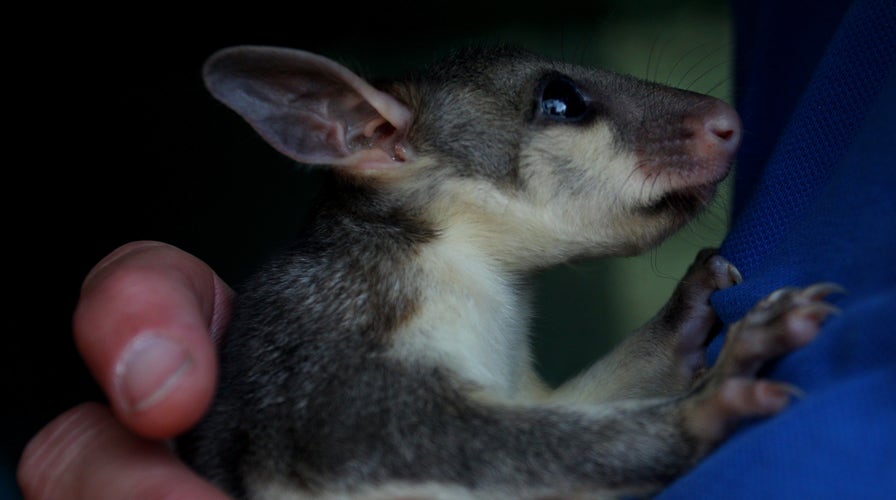Fox News Flash top headlines for Jan. 10
Fox News Flash top headlines for Jan. 10 are here. Check out what's clicking on Foxnews.com
More than 1 billion birds, reptiles and mammals may have been killed by the fires sweeping across Australian, according to a new estimate from the University of Sydney.
Chris Dickman, a University of Sydney professor from the science faculty, had to revise his initial estimate of the number of animals killed or imperiled on the enormous continent because of the fire's ferocious spread.
"I think there's nothing quite to compare with the devastation that's going on over such a large area so quickly. It's a monstrous event in terms of geography and the number of individual animals affected," Dickman said in a statement released by the university.
RARE ANCIENT JERUSALEM MEASURING TABLE REVEALS TEMPLE MOUNT MARKET

This photo taken on January 9, 2020, shows a rescued kangaroo being cared for by volunteers of wildlife rescue group WIRES, who are working to save and rehabilitate animals from the months-long bushfire disaster, on the outskirts of Sydney. (SAEED KHAN/AFP via Getty Images)
The fires, which have ravaged Australia for months, have spread quickly and overwhelmed efforts to contain them. Two massive bushfires in southeastern Australia recently merged into one gigantic megafire measuring nearly 1.5 million acres, NPR reports. In total, over 130 bushfires have claimed the lives of 26 people and destroyed at least 3,000 homes, according to published reports.
The professor, who has 30 years of experience working on the ecology, conservation and management of Australian mammals, explained in the statement: “We know that Australian biodiversity has been going down over the last several decades, and it's probably fairly well known that Australia's got the world's highest rate of extinction for mammals. It's events like this that may well hasten the extinction process for a range of other species. So, it's a very sad time."
"What we're seeing are the effects of climate change. Sometimes, it's said that Australia is the canary in the coal mine with the effects of climate change being seen here most severely and earliest. … We're probably looking at what climate change may look like for other parts of the world in the first stages in Australia at the moment," Dickman elaborated.
NASA CAPTURES BREATHTAKING IMAGE OF NACREOUS CLOUDS OVER SWEDEN

Barb Copus holds a rescued baby brushtail possum at the Kangaroo Island Wildlife Park in the Parndana region on January 08, 2020, on Kangaroo Island, Australia. ((Photo by Lisa Maree Williams/Getty Images))
Dickman said that even when animals survive the fires, when they return to their habitats, they won't have the resources they need for support or they'll fall victim to predators.
The University of Sydney notes that 34 species of native mammals have become extinct in Australia over the last 200 years, which is the highest rate of loss for any region on earth.
